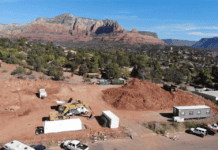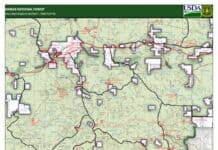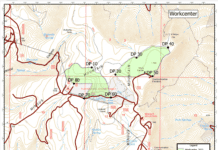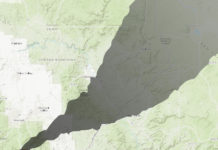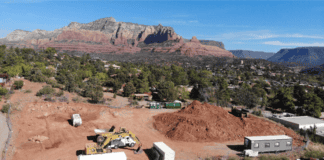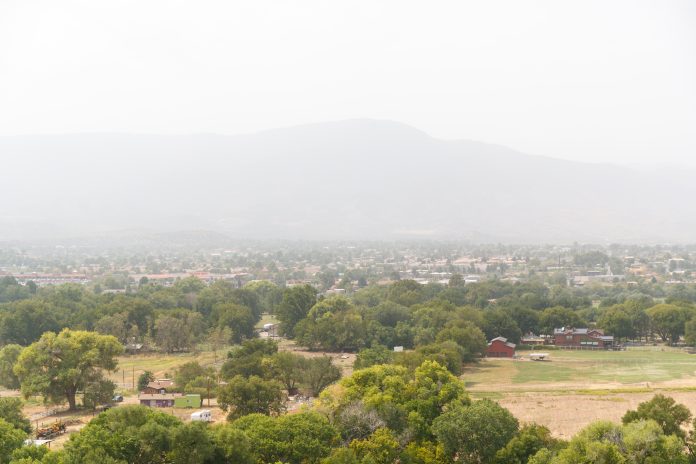
Verde Valley residents awoke on the morning of Tuesday, Sept. 8 to see … nothing. The normally clear Northern Arizona skies that usually allow residents to see for miles and miles were marred by a white haze, the residue of 22 wildfires in California and 10 other Western states away from the Verde Valley, swept by Santa Ana winds several hundred miles to hover in the air above us.
“The smoke is primarily from fires in California and Colorado, but Arizona and Utah fires could contribute in the coming days as well,” Ken Daniel, a meteorologist at the National Weather Service’s Flagstaff office, wrote in an email. “As numerous fires continue to churn, and the atmosphere continues to mix, it’s becoming even harder and harder to separate the individual sources.”
Though the rest of the week was notably clearer than the white haze last Tuesday, meteorologists stress that with the fires in other states not yet abating, the smoke could be back soon.
“Any other predictions on the coming weeks or when the smoke could clear are largely dependent on the fires themselves,” Daniel wrote. “As long as these extreme fires continue to put out lots of smoke across the Southwest, it will still be a concern.”
The Arizona Department of Environmental Quality operates a network of Portable Particulate Monitors across Arizona. These monitors record hourly average concentrations of particulates which have been linked to health and visibility concerns.
According to the ADEQ, particulate concentration peaked on the 8th at 30 micrograms per cubic meter, compared to a usual average of less than 10 μg/m3. In Sedona, smoke peaked at 49 μg/ m3, crossing out of what ADEQ classifies as “Good” quality [under 38 μg/m3 on an hourly basis and under 12 μg/m3 averaged over a 24-hour period] into “Moderate.”
According to Caroline Oppleman, a communications administrator for ADEQ, the smoke mostly remained relatively high, meaning that it has not negatively affected breathing for most residents, despite the high visual prevalence.
“In the Phoenix area today [Sept. 8], we do not have any pollution advisory in place at all, but because of the haze, I’ve gotten so many questions from people calling about [air safety],” Oppleman said.
Yavapai County Community Health Services nevertheless released recommendations for older adults, young children and
teenagers, pregnant women, and people suffering from heart or lung disease, diabetes, or asthma to take caution and stay inside when possible, while monitoring possible shortness of breath.
Though health effects appear to be limited, the effects of the smoke on weather could be larger. Brian A. Klimowski, meteorologist-in-charge for the Flagstaff NWS office suggested that the smoke cover could lead to a temperature drop of somewhere between 2 to 7 degrees, “similar to that of cloud cover.” However, Daniel pointed out that a cold front drifting southward across Arizona is likely a greater cause of the cool down in the middle of last week than the smoke.
Tips from YCCHS
It’s especially important to pay attention to local air quality reports during this fire season if you are:
■ a person with heart or lung disease, such as heart failure, angina, ischemic heart disease, chronic obstructive pulmonary disease, emphysema or asthma.
■ an older adult, which makes you more likely to have heart or lung disease than younger people.
■ caring for children, including teenagers, because their respiratory systems are still developing. They breathe more air [and air pollution] per pound of body weight than adults, they’re more likely to be active outdoors and they’re more likely to have asthma.
■ a person with diabetes, because you are more likely to have underlying cardiovascular disease.
■ a pregnant woman, because there could be potential health effects for both the mother and the developing fetus.
Tips for coping with smoke haze
■ People who suffer from asthma or other breathing issues should stay indoors and avoid outdoor activities — seek medical advice as needed
■ Keep windows and doors closed, or stay in air-conditioned areas
■ Avoid vigorous exercise
■ Cover your nose and mouth with a mask designed to filter fine particles — must be rated P1 or P2 and are available from hardware stores
■ Postpone outdoor events
■ Take advantage of smoke-free breaks in the environment to air out your home, but close up when smoke reoccurs
■ If shortness of breath or coughing develops, seek medical advice or use a reliever


